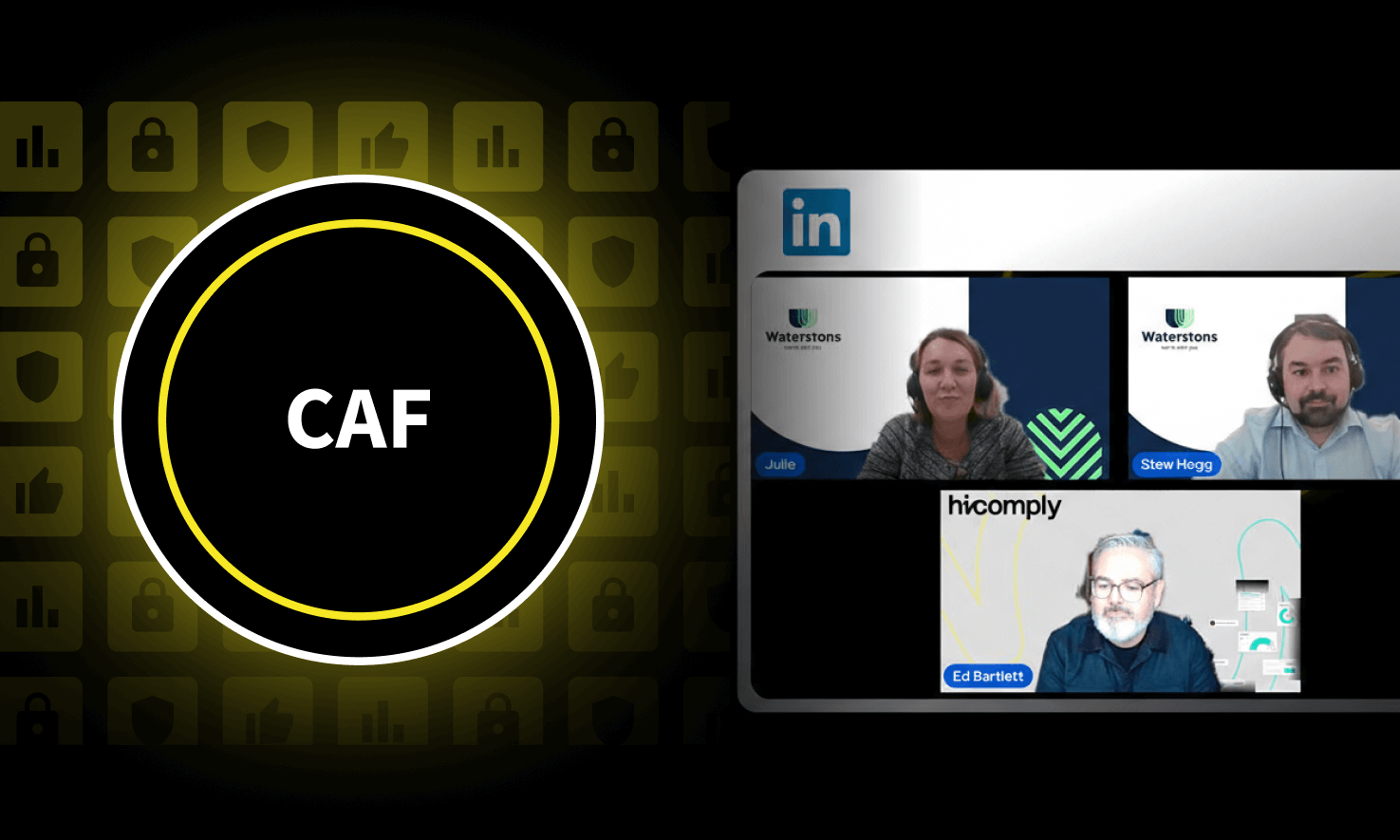Trust sits at the heart of every digital health platform.
Patients, providers, and partners all rely on you to protect their most sensitive information — from electronic health records to protected health information (PHI). But in a landscape shaped by constant innovation, complex integrations, and rising cyber threats, maintaining that trust takes more than good intentions.
It takes evidence.
That’s where SOC 2 healthcare compliance comes in. It’s the independent assurance that your organisation’s controls — the policies, systems, and processes behind the scenes — are doing what you say they do.
Why SOC 2 Is the Trust Signal Healthcare Can’t Ignore
SOC 2 (short for Service Organisation Control 2) isn’t a legal requirement like HIPAA or the NHS DSPT. But it’s fast becoming a business requirement.
Healthcare organisations and hospitals increasingly ask for SOC 2 reports before they’ll even start vendor onboarding. Why? Because it’s third-party proof that your security controls, risk management, and data protection measures are working.
A SOC 2 report, issued by certified public accountants (CPAs), assesses your organisation’s controls against the Trust Services Criteria — security, availability, processing integrity, confidentiality, and privacy.
For healthcare, that means:
- Security: Your systems are protected from unauthorised access.
- Availability: Critical systems are reliable and accessible when needed.
- Processing Integrity: Data inputs, storage, and outputs are accurate, valid, and timely.
- Confidentiality & Privacy: PHI, EHR, and other sensitive information are only accessed by authorised people.
In short: it’s the compliance framework that turns your security promises into verified facts.
SOC 2 vs HIPAA vs NHS DSPT — The Real Differences
Let’s clear this up once and for all.
HIPAA and DSPT ensure regulatory compliance. SOC 2 proves operational effectiveness — that your organisation’s controls are designed and working over time.
Both HIPAA and DSPT tell you what you must protect. SOC 2 shows how well you’re doing it.
That’s why SOC 2 and HIPAA together give you the best of both worlds — legal compliance and independent validation.
Why Healthcare Organisations Are Turning to SOC 2
Across the UK and US, healthcare and health-tech organisations face an impossible balance: stay compliant, protect data, and still innovate fast enough to survive.
SOC 2 provides the structure to do all three.
It helps healthcare providers, startups, and third-party vendors to:
- Protect sensitive data with strong access controls and encryption.
- Manage customer data responsibly across cloud and SaaS environments.
- Assess vendor risks before they cause security breaches.
- Demonstrate compliance to investors, partners, and regulators.
- Build operational efficiency through defined, automated security practices.
As a bonus, healthcare companies can share their SOC 2 report with partners and prospective clients to demonstrate their robust security posture. It’s an instant trust accelerator — especially when you’re handling sensitive patient data or integrating with hospital systems.
The Key Benefits of SOC 2 for Healthcare
1. Trust That Scales
SOC 2 turns “we’re secure” into something you can prove. That makes vendor approvals faster and relationships with healthcare organisations easier.
2. Broader Protection Than HIPAA Alone
HIPAA compliance focuses on PHI. SOC 2 for healthcare covers all sensitive data — from staff records to analytics pipelines — and addresses availability, processing integrity, and confidentiality across your tech stack.
3. Better Risk Management
SOC 2 compliance encourages proactive risk management. Regular risk assessments and continuous monitoring mean issues are caught early, not during the audit scramble.
4. Operational Efficiency
By defining your security controls, policies, and incident response plans, you create repeatable systems that improve productivity — not bureaucracy.
5. Competitive Advantage
Maintaining compliance with both SOC 2 and HIPAA provides strategic advantages that outweigh the costs. It signals maturity, reduces regulatory fines, and makes your security a selling point.
SOC 2 as a Framework for Data Security & Privacy
Let’s break down how SOC 2 actually supports healthcare’s security obligations:
- Data Security Controls – Role-based access controls, encryption, and environmental controls protect systems against unauthorised access.
- Data Confidentiality – Policies to ensure PHI and other sensitive information are accessed strictly on a need-to-know basis.
- Processing Integrity – Ensuring data accuracy and reliability of systems handling patient data.
- Privacy – Strict handling of protected health information, including breach notification procedures and retention rules.
- Availability – Disaster recovery plans and redundancy ensure system reliability even during outages.
This framework doesn’t replace HIPAA or DSPT — it strengthens them. In fact, SOC 2 adds an additional layer of security and privacy for data processed under HIPAA or NHS regulations.
NHS DSPT + SOC 2 = UK Trust, US Credibility
In the UK, NHS DSPT is the bare minimum if you handle NHS data. But it’s a self-assessment — not a full audit.
That’s why more UK digital health companies are layering SOC 2 or ISO-27001 compliance on top of DSPT. It gives them:
- Independent, audited proof of their security posture
- A globally recognised compliance report that impresses both UK and US partners
- Confidence when bidding for NHS contracts or partnering with US healthcare providers
If you’re expanding internationally, SOC 2 isn’t just useful — it’s essential. It bridges UK and US healthcare regulations, proving your security efforts meet global standards.
Preparing for Your SOC 2 Audit (Without the Pain)
You don’t need to suffer through SOC 2. Preparation is everything — and automation helps.
Step 1: Start with a Readiness Assessment
Identify compliance gaps through a risk assessment and gap analysis. Platforms like Hicomply automate this, mapping every requirement against the Trust Services Criteria.
Step 2: Strengthen Security Controls
Document access control policies, disaster recovery plans, and incident response plans. Make sure your organisation’s controls related to data security are fully implemented and tested.
Step 3: Train Your Team
Ongoing security awareness training is critical. It keeps compliance front-of-mind and supports evidence collection during audits.
Step 4: Automate Evidence Collection
Manual screenshots are ancient history. With automated evidence gathering and continuous monitoring, you stay audit-ready year-round.
Step 5: Engage the Right Auditor
Work with certified public accountants who understand healthcare regulations. They’ll assess your internal controls and test your security availability processing integrity over time.
Common Pitfalls in SOC 2 Healthcare Compliance
You don’t need to learn the hard way. Here’s what I see most often:
- Neglecting vendor management – Failing to assess third-party vendors handling sensitive patient data.
- Skipping role-based access controls – Too many users with admin rights = risk exposure.
- Poor incident response planning – No breach notification or containment procedures.
- Treating SOC 2 as a one-off project – True compliance is ongoing; it’s about culture, not checklists.
- Manual chaos – Tracking 100+ compliance tasks in spreadsheets. (Please don’t.)
Good news: all of these can be fixed with structured workflows and automation.
The Link Between SOC 2 and HIPAA Compliance
Let’s be clear — SOC 2 doesn’t replace HIPAA or NHS DSPT. But it makes both easier.
SOC 2 supports HIPAA compliance by addressing broader security needs across cloud infrastructure, data processing, and third-party integrations. It creates a comprehensive approach to data protection that safeguards protected health information from end to end.
For example:
- HIPAA requires you to protect patient data.
- SOC 2 ensures your security measures and operational risks are tested and verified independently.
Together, they form a compliance stack that’s stronger than either framework alone.
How Hicomply Helps You Stay Ready
At Hicomply, we’ve helped healthcare startups, SaaS providers, and clinical tech teams turn chaotic compliance efforts into calm, repeatable systems.
Here’s how we make SOC 2 for healthcare easier:
- Automated risk assessments and control mapping against Trust Services Criteria.
- Pre-built policy templates for data confidentiality, access controls, and incident response.
- Continuous monitoring to maintain ongoing compliance and risk mitigation.
- Centralised evidence collection and workflow automation.
- Dashboards that show your audit readiness at a glance — no 3am spreadsheet panic required.
Achieving SOC 2 compliance helps healthcare organisations manage risks more effectively, improve workflows, and safeguard protected health information without losing operational speed.
The Bottom Line: Trust Is the New Treatment Plan
Healthcare runs on trust. Whether you’re processing lab data, mental health records, or telemedicine chats — security posture is your credibility.
SOC 2 gives you the structure, the audit trail, and the proof to show it. It’s not just about avoiding fines — it’s about risk mitigation, revenue growth, and patient confidence.
SOC 2 doesn’t slow healthcare down. It keeps it alive.
- Auto-generates policies aligned to Trust Services Criteria
- Centralises evidence collection and control tracking
- Keeps you audit-ready year-round with continuous monitoring
- Makes working with auditors (almost) enjoyable
No spreadsheets. No last-minute panic. Just calm, clear, oddly satisfying compliance.
Ready to Earn Patient Trust (and Close Deals Faster)?
Compliance doesn’t have to be painful — or slow.
Explore the interactive demo to see how Hicomply helps digital health companies prepare for SOC 2, pass faster, and build trust that actually drives revenue.




.png)
.png)
